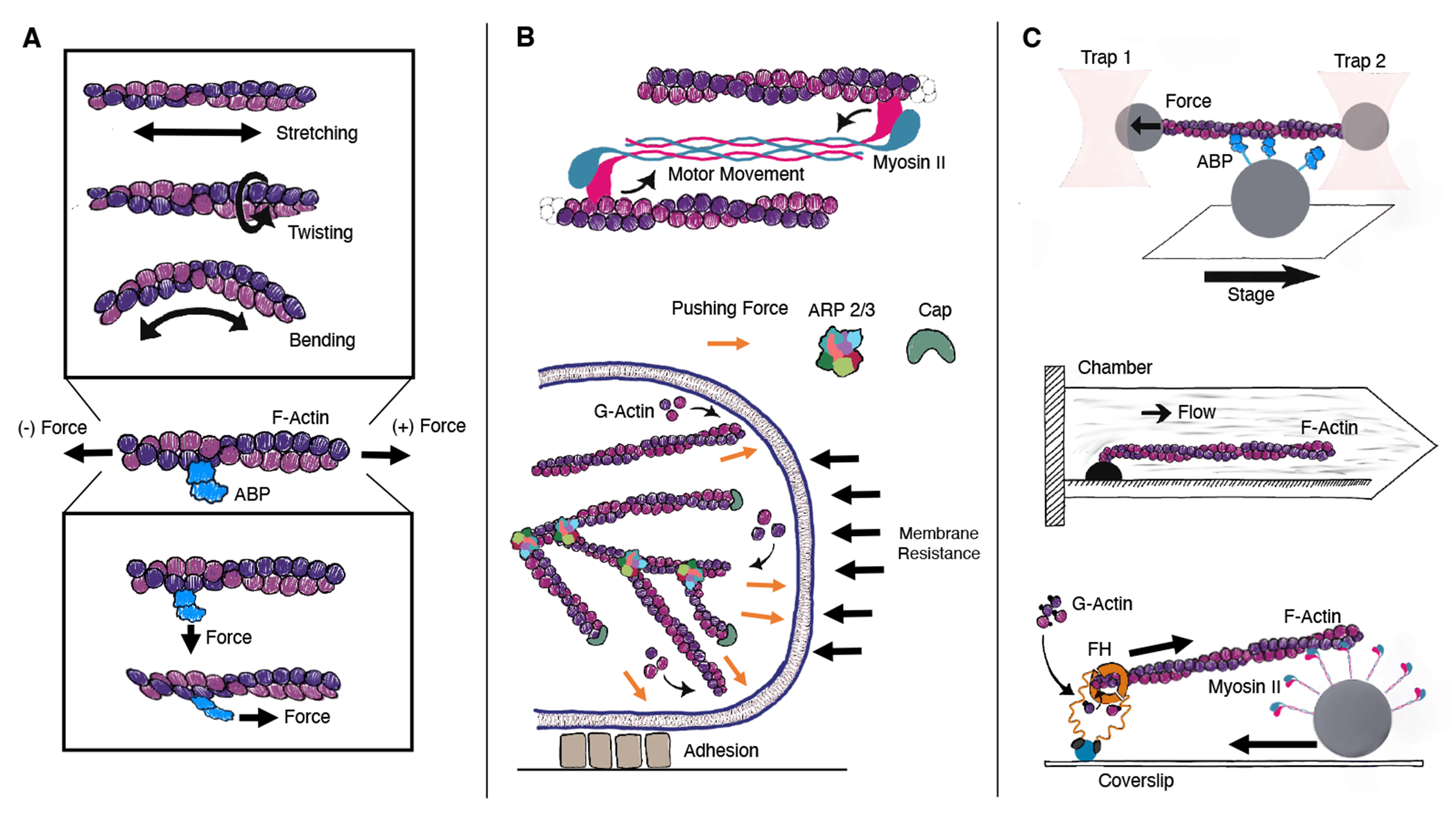FIGURE 1.

(A) Actin filaments are polar helical non-covalent polymers. Forces applied directly to filaments can cause stretching, twisting, and bending, while forces applied to actin binding proteins (ABPs) perpendicular or parallel can cause stronger or weaker binding. (B) In cells, forces on proteins are caused by motion of motor proteins along filaments, by polymerization of filaments against structures, or through interactions with cellular adhesion proteins. (C) In vitro, the effect of forces on actin and actin binding proteins can be probed by using tweezers, 13 microfluidic devices, 14 or with motors anchored either to substrates or beads. 15
